★★½
“Only women bleed…”

The Hardcore genre is denigrated by some pro-wrestling fans as “garbage wrestling,” but I’ve never quite felt that way. To be good, you still need many of the same skills necessary to be good at the more regular end of sports entertainment: ability to work the crowd, sell the offense of your opponent, put over a storyline, etc. It’s true, you don’t need much in the way of technical aptitude to let someone break a fluorescent light-tube across your head, but the willingness to do so is certainly worthy of undeniable respect (if coupled with questions about your sanity). The bottom line is, there are good “garbage wrestlers” and there are bad ones. We’ve seen both in our previous coverage of the genre, when we wrote about FMW: Torn to Shreds, where we saw Megumi Kudo and Shark Tsuchiya, who represent the two ends of the spectrum.
We’ve also spoken before about the gulf betwen Japanese women’s pro-wrestling and the largely pathetic excuse for it put out by the WWE, where two minutes of a glorified cat-fight passes muster as a title match. You need to abandon network TV and go down to the independent level if you want to look for anything comparable – in style, if not necessarily in quality – to joshi puroresu, and it’s there that we found this. The IWA Mid-South federation had been holding annual “King of the Deathmatch” tournaments for quite some time, the first being won by Ian Rotten, one of the most well-known/infamous garbage wrestlers (current WWE heavyweight champion, C.M. Punk was part of the 2004 event, in a non-deathmatch bout). But in 2006, they also staged a similar event for women wrestlers.
 Of course, this being independent wrestling where the phrase “card subject to change” is a given, the eight women scheduled to complete ended up being seven and a man. MC Ian Rotten said that Delilah Starr had a car-crash on the way here, and another competitor, LuFisto, had broken her hand fighting another notorious garbage wrestler, Necro Butcher, in a Canadian Death Match tournament called “Bloodstock”. Taking advantage of the open spot was SeXXXy Eddy, a male wrestler with a long history of intergender matches, which his in-ring persona thoroughly enjoyed, as you can imagine from his name. The roster also included reigning IWA women’s champion Mickie Knuckles, Rachel Putski (grand-daugher of WWE Hall of Famer Ivan Putski), and two joshi wrestlers, Mayumi Ozaki and Sumi Sakai.
Of course, this being independent wrestling where the phrase “card subject to change” is a given, the eight women scheduled to complete ended up being seven and a man. MC Ian Rotten said that Delilah Starr had a car-crash on the way here, and another competitor, LuFisto, had broken her hand fighting another notorious garbage wrestler, Necro Butcher, in a Canadian Death Match tournament called “Bloodstock”. Taking advantage of the open spot was SeXXXy Eddy, a male wrestler with a long history of intergender matches, which his in-ring persona thoroughly enjoyed, as you can imagine from his name. The roster also included reigning IWA women’s champion Mickie Knuckles, Rachel Putski (grand-daugher of WWE Hall of Famer Ivan Putski), and two joshi wrestlers, Mayumi Ozaki and Sumi Sakai.
The first round got under way with a Staple Gun Match between Knuckles and Ann Thraxx: it was best of 13, so the first to embed seven staples in their opponent won. Knuckles was busted open immediately, but this was very much equal opportunity carnage: as the pic on top shows, the red, red blood contrasted nicely with Thraxx’s bleached blonde hair. The score was tied at six with a staple to Knuckle’s crotch, but she took the win by tacking a dollar bill on Thraxx’s nose. Next up was a disappointingly bland thumbtack match, with Putski taking on Vanessa Kraven in ring containing a small box of tacks: it was Kraven’s first death-match, and you could tell her heart really wasn’t in it. Add another skill to the list necessary to succeed as a garbage wrestler: commitment.
The third match was improved, though from a strictly aesthetic and visual sense, was hard to watch. Amy Lee – about as far from a WWE diva as it’s possible to get – took on SeXXXy Eddy, who was wearing what can only be described as a “banana hammock”. This was a “Four Corners Of Pain” bout, with the corners of the ring behind home to barb-wire/salt, mousetraps, fluorescent light-tubes and..,er, lemons? Life gives you lemons, you…stage a death-match. That said, this was mostly fun for Eddy’s antics, not least his epic selling of the mousetraps: though he won, he took care in the post-match interview to put Amy over, for which he deserves credit. The first round finished with Mayumi Ozaki taking on Japanese colleague Sumie Sakai, in a Barbed Wire Ropes and Boards match: this was basically a squash, Sakai taking all the damage, as Ozaki prevailed.
Moving on to the semi-finals, the first pitted Knuckles against Putski in a Taipei Death Match. In this, the wrestlers’ fists are taped, dipped into glue and then in broken and crushed glass, to turn their fists into nasty weapons – its use here may have been because the most infamously bloody of these was between tonight’s MC, Ian Rotten, and his “brother” Axl, at a 1995 ECW show. This one is not much less messy, especially when the two wrestlers set up on facing chairs, and take turns whaleing away at each other’s foreheads [a common target in this kind of wrestling, being an area not likely to incur permanent damage, but capable of generating plenty of the red, red kroovy, as A Clockwork Orange called it, running down the face]. Knuckles prevailed, but hard to say who lost more blood.
Osaki took on Eddy in a two out of three, light-tube log-cabin match. You’re wondering what a light-tube log-cabin is, aren’t you. Those are fluorescent tubes, taped together in a square, four to a side and maybe stacked four interweaved rows or so high. They make a very satisfying crunch when you drop your opponent through one, as we discover here. One thing wrestling fans know, is “two out of three” anything means the first two will inevitably be split, and that’s the case here: Ozaki gets backdropped through the first log-cabin, but comes back with a flying kick off a chair to send Eddy into the second. She takes the win after he tries a high-risk manoeuvre off the top rope, only to be grabbed by his banana hammock and flipped through the deciding log-cabin. Ozaki, again, appears to avoid significant damage.
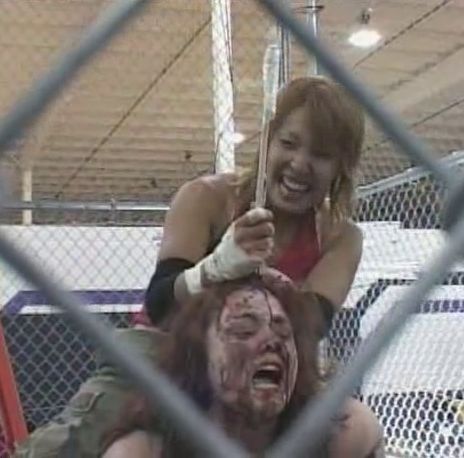 The final, between her and Knuckles was officially described as a (deep breath!) “No Rope Barbed Wire Fans Bring The Weapons Electrified Lighttubes Cage Match”. Basically, pretty much anything went, inside a steel cage which came already furnished with a ladder, beer barrel, barbed-wire ropes, a host of other offensive shrapnel (barbecue fork, baking tray, and bizarrely, a light-up magic wand with a star on the end) and enough fluorescent light-tubes to illuminate Vegas – yes, some of which were plugged in and working, for added emphasis. It is, I think, the first wrestling bout I’ve seen where the referee wore eye-protection. Knuckles hadn’t even bothered to clean up after the last bout, coming to the ring still covered in dried gore from her semi-final.
The final, between her and Knuckles was officially described as a (deep breath!) “No Rope Barbed Wire Fans Bring The Weapons Electrified Lighttubes Cage Match”. Basically, pretty much anything went, inside a steel cage which came already furnished with a ladder, beer barrel, barbed-wire ropes, a host of other offensive shrapnel (barbecue fork, baking tray, and bizarrely, a light-up magic wand with a star on the end) and enough fluorescent light-tubes to illuminate Vegas – yes, some of which were plugged in and working, for added emphasis. It is, I think, the first wrestling bout I’ve seen where the referee wore eye-protection. Knuckles hadn’t even bothered to clean up after the last bout, coming to the ring still covered in dried gore from her semi-final.
This one was relatively brief, and must confess, I actually found it somewhat disappointing, especially considering it was supposed to be the grand final. It felt almost as if both women had been drained by the previous encounters, so (understandably) had little energy left for their third match of the night. There was some breaking of glass and some mild use of foreigh objects, but it lasted only a little more than seven minutes in total, before Knuckles kicked through one of the electrified light fixtures into Ozaki’s forehead, following up with a pin for a three-count and victory. She didn’t really get to enjoy her title for long, as LuFisto and Kraven came in, blindsided her and left Knuckles draped in a Canadian flag, obviously intended to set a grudge-match up for the next IWA Mid-South event,
This is not great wrestling, by any means: matches generally proceed at a sluggish pace, and the format offers little scope for any significant degree of technical skill. But I have nothing but total respect for the participants, who put their bodies on the line for the entertainment of the audience, with a cheerful lack of concern for safety. If they were getting paid tens of thousands of dollars, I could perhaps understand it, but the paying crowd here probably numbered a hundred or less, so the compensation for their efforts can have been little more than token. Such willingness to suffer for your art (and there is no doubt in my mind, that pro wrestling is indeed an art), can only be applauded.
Date/time: November 3, 2006 at the Capital Sports Arena in Plainfield, Indiana.
Participants: Mickie Knuckles, Mayumi Ozaki, Rachel Putski, Sexxxy Eddy
Available through Amazon, as The Best of Deathmatch Wrestling, Vol. 4: Queens of the Deathmatch.
 This early Golden Harvest ensemble piece focuses on a plot for communal revenge against the evil General Hsiao (Han Ying Chieh), who was responsible for killing the fathers of the titular octet during his rise to power. However, he’s not all bad, as he raised a couple of his victims’ children as his own, who are now on his side, unaware of his involvement in their status as orphans. Three of the eight are women, a solidly respectable ratio given the 1971 provenance. They include both relative newcomer Mao as Kuei Chien Chin, who disguises herself as a man – as thoroughly unconvincingly as these things usually are in Hong Kong movies! – to infiltrate Hsiao’s camp, and the more established Miao as Chiang Yin, one of the previously mentioned surrogate offspring adopted by the general. The third is Lydia Shum, who is perhaps actually the most memorable, being loud, abrasive and larger than life in a very physical way.
This early Golden Harvest ensemble piece focuses on a plot for communal revenge against the evil General Hsiao (Han Ying Chieh), who was responsible for killing the fathers of the titular octet during his rise to power. However, he’s not all bad, as he raised a couple of his victims’ children as his own, who are now on his side, unaware of his involvement in their status as orphans. Three of the eight are women, a solidly respectable ratio given the 1971 provenance. They include both relative newcomer Mao as Kuei Chien Chin, who disguises herself as a man – as thoroughly unconvincingly as these things usually are in Hong Kong movies! – to infiltrate Hsiao’s camp, and the more established Miao as Chiang Yin, one of the previously mentioned surrogate offspring adopted by the general. The third is Lydia Shum, who is perhaps actually the most memorable, being loud, abrasive and larger than life in a very physical way.




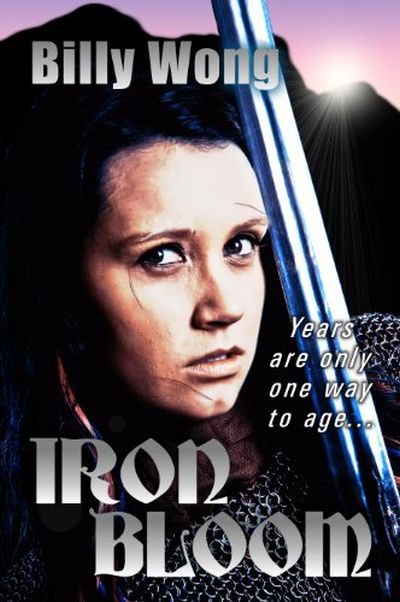 This first book in Wong’s Legend of the Iron Flower series is one I got for my Kindle app at a time when it was being given away free. I only read books that way to see whether I consider them worth buying a copy –and in this case, the print edition is now on my book shelf. As a first novel, it’s not unflawed, but I liked it well enough to support the author by buying a copy, and plan to continue reading the series.
This first book in Wong’s Legend of the Iron Flower series is one I got for my Kindle app at a time when it was being given away free. I only read books that way to see whether I consider them worth buying a copy –and in this case, the print edition is now on my book shelf. As a first novel, it’s not unflawed, but I liked it well enough to support the author by buying a copy, and plan to continue reading the series.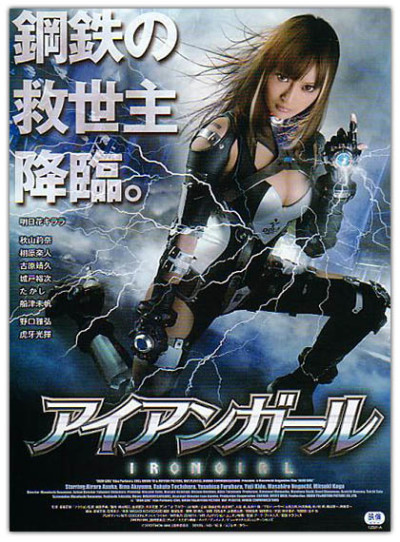 The introduction tries to make it seem as if this could take place at any point in history, but there’s not much effort put into maintaining the illusion. The guns and overall setting – best described as “distressed warehouse” – puts this firmly into the post-apocalypse genre, though it’s very much at the bargain basement end of the spectrum. The heroine (adult actress Asuka) stumbles across naively innocent Anne (Akiyama), being pawed by some bad guys after straying into the danger zone to pick flowers; clearly a kinder, gentler apocalypse. After punching them out, assisted by remarkable reactions and her metal exo-skeleton, Anne is escorted back to her
The introduction tries to make it seem as if this could take place at any point in history, but there’s not much effort put into maintaining the illusion. The guns and overall setting – best described as “distressed warehouse” – puts this firmly into the post-apocalypse genre, though it’s very much at the bargain basement end of the spectrum. The heroine (adult actress Asuka) stumbles across naively innocent Anne (Akiyama), being pawed by some bad guys after straying into the danger zone to pick flowers; clearly a kinder, gentler apocalypse. After punching them out, assisted by remarkable reactions and her metal exo-skeleton, Anne is escorted back to her  What? Gina Carano in another action flick? Why was I not informed of this? After all, Haywire was an undeniably impressive entry in the genre, featuring some of the crunchiest mayhem seen in a while. Throw in that this was directed by Stockwell, who directed the hidden gem, Cat Run, and my interest was thoroughly piqued. Sadly, this isn’t up to the level of either, though certainly has its moments. Carano plays Ava Grant, an ex-junkie who met her other half, Derek (Gigandet) at a Narcotics Anonymous meeting, but whose murky past is clearly far beyond that of her husband. Ava’s father brought her up tough, and able to protect herself, basing her life on mantras such as, “Survivors have scars. Losers have funerals.” We see, in flashback, that she was an apt student.
What? Gina Carano in another action flick? Why was I not informed of this? After all, Haywire was an undeniably impressive entry in the genre, featuring some of the crunchiest mayhem seen in a while. Throw in that this was directed by Stockwell, who directed the hidden gem, Cat Run, and my interest was thoroughly piqued. Sadly, this isn’t up to the level of either, though certainly has its moments. Carano plays Ava Grant, an ex-junkie who met her other half, Derek (Gigandet) at a Narcotics Anonymous meeting, but whose murky past is clearly far beyond that of her husband. Ava’s father brought her up tough, and able to protect herself, basing her life on mantras such as, “Survivors have scars. Losers have funerals.” We see, in flashback, that she was an apt student.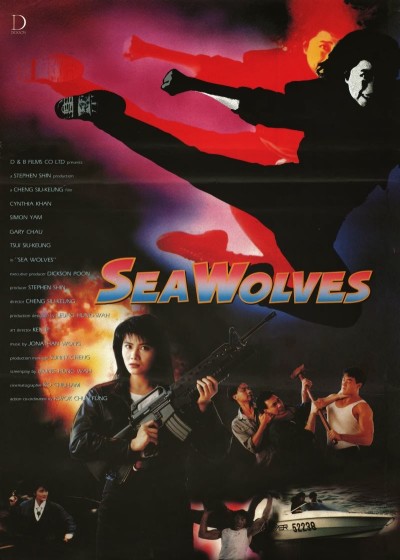 As with the preceding entry, there’s a smattering of social commentary; here, the topic is Vietnamese boat people, who reached Hong Kong in droves during the late eighties. The bad guys are a group of pirates, led by Keung (Chu), who prey on the boats, stripping the refugees of valuables before killing them. On one raid, member of the crew John (Yam) recognizes friend Gary (Chow): while he manages to hide Gary, and stop him from being killed, the stowaway suffers cinematically-convenient amnesia, until the boat docks in Hong Kong.
As with the preceding entry, there’s a smattering of social commentary; here, the topic is Vietnamese boat people, who reached Hong Kong in droves during the late eighties. The bad guys are a group of pirates, led by Keung (Chu), who prey on the boats, stripping the refugees of valuables before killing them. On one raid, member of the crew John (Yam) recognizes friend Gary (Chow): while he manages to hide Gary, and stop him from being killed, the stowaway suffers cinematically-convenient amnesia, until the boat docks in Hong Kong.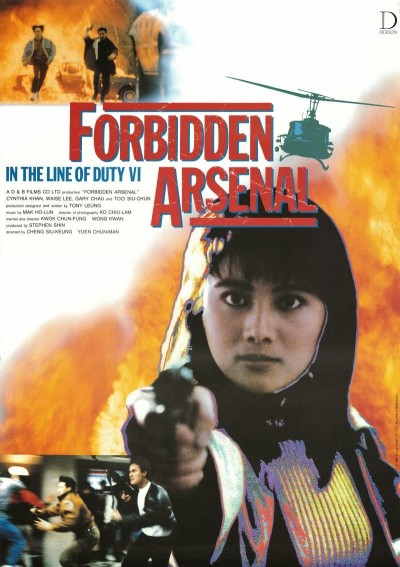 Sporting the subtitle “Forbidden Arsenal” – though if the poster (right) is anything to go by, it’s more of a domtitle – this further weakens the series by making Cynthia Khan only one-third of the action. She’s joined here by Chen (Lee), a cop from mainland China, and Hua (Do), a Taiwanese policemen, who get caught by the locals while they are operating, independently, in Hong Kong as part of their investigation of an arms smuggling gang run by Paul (Shou). Rather than deporting the uninvited guests, they are brought on to assist Madam Yeung (Khan), but soon discover one of the problems about taking on gun-runners: there’s a good chance they’re going to be rather better-armed than you.
Sporting the subtitle “Forbidden Arsenal” – though if the poster (right) is anything to go by, it’s more of a domtitle – this further weakens the series by making Cynthia Khan only one-third of the action. She’s joined here by Chen (Lee), a cop from mainland China, and Hua (Do), a Taiwanese policemen, who get caught by the locals while they are operating, independently, in Hong Kong as part of their investigation of an arms smuggling gang run by Paul (Shou). Rather than deporting the uninvited guests, they are brought on to assist Madam Yeung (Khan), but soon discover one of the problems about taking on gun-runners: there’s a good chance they’re going to be rather better-armed than you.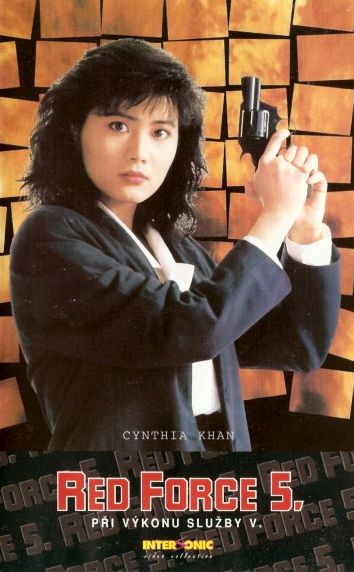 After the magnificence of Donnie Yen and Khan in its insane predecessor, the fifth installment was always going to have a tough job living up to the same standard. On its own terms, it’s perfectly reasonable, but certainly suffers in the comparison, not least because the storyline is strikingly similar. Once again, there’s an innocent who gets caught up in murky dealings between Inspector Yang Lei-Ching (Khan) and the CIA, and finds themselves on the run from a pack of assassins, unsure who to trust – except Yang, of course. In this case, it’s her cousin, David (Wu), a marine who has returned to Hong Kong, only to find himself under suspicion for espionage. In particular, being part of a Korean group, led by a man known only as ‘The General’ (Chow), who deals in Western secrets. It’s up to David and Lei-Ching to prove otherwise – if they can stay alive long enough to do it.
After the magnificence of Donnie Yen and Khan in its insane predecessor, the fifth installment was always going to have a tough job living up to the same standard. On its own terms, it’s perfectly reasonable, but certainly suffers in the comparison, not least because the storyline is strikingly similar. Once again, there’s an innocent who gets caught up in murky dealings between Inspector Yang Lei-Ching (Khan) and the CIA, and finds themselves on the run from a pack of assassins, unsure who to trust – except Yang, of course. In this case, it’s her cousin, David (Wu), a marine who has returned to Hong Kong, only to find himself under suspicion for espionage. In particular, being part of a Korean group, led by a man known only as ‘The General’ (Chow), who deals in Western secrets. It’s up to David and Lei-Ching to prove otherwise – if they can stay alive long enough to do it.
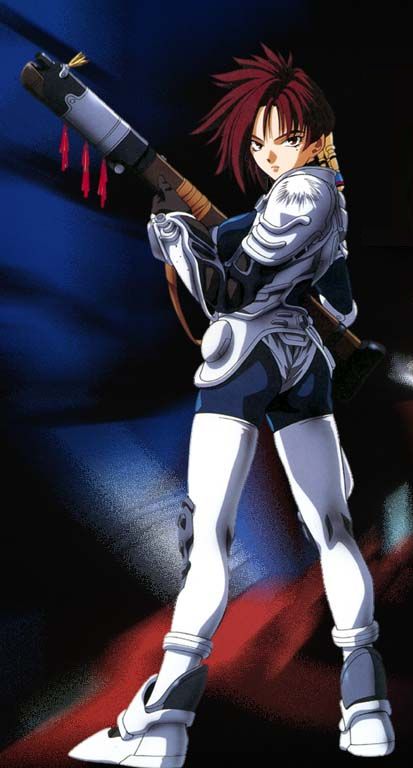 Though released several years later, this is a prequel to the two Zeiram movies, telling the story of the first encounter between Iria (Hisakawa, who was also Sailor Mercury) and Zeiram. At the time, she was an apprentice bounty-hunter, working alongside her brother Gren. They take a mission to rescue a VIP and recover the cargo from a stranded space-ship. However, once there, they discover the “cargo” is actually the alien Zeiram, which a corporation is interested in using as a weapon. The result leaves her brother apparently dead, and Iria now the target for the corporation, who want to hush up their thoroughly-dubious plan, by any means necessary. Fortunately, as well as her own skills, our heroine has the assistance of former rival bounty-hunter, Fujikuro (Chiva), endearing urchin Kei (Kanai), and Bob (Ikeda), a colleague whose consciousness has been turned into an AI.
Though released several years later, this is a prequel to the two Zeiram movies, telling the story of the first encounter between Iria (Hisakawa, who was also Sailor Mercury) and Zeiram. At the time, she was an apprentice bounty-hunter, working alongside her brother Gren. They take a mission to rescue a VIP and recover the cargo from a stranded space-ship. However, once there, they discover the “cargo” is actually the alien Zeiram, which a corporation is interested in using as a weapon. The result leaves her brother apparently dead, and Iria now the target for the corporation, who want to hush up their thoroughly-dubious plan, by any means necessary. Fortunately, as well as her own skills, our heroine has the assistance of former rival bounty-hunter, Fujikuro (Chiva), endearing urchin Kei (Kanai), and Bob (Ikeda), a colleague whose consciousness has been turned into an AI.
 Of course, this being independent wrestling where the phrase “card subject to change” is a given, the eight women scheduled to complete ended up being seven and a man. MC Ian Rotten said that Delilah Starr had a car-crash on the way here, and another competitor, LuFisto, had broken her hand fighting another notorious garbage wrestler, Necro Butcher, in a Canadian Death Match tournament called “Bloodstock”. Taking advantage of the open spot was SeXXXy Eddy, a male wrestler with a long history of intergender matches, which his in-ring persona thoroughly enjoyed, as you can imagine from his name. The roster also included reigning IWA women’s champion Mickie Knuckles, Rachel Putski (grand-daugher of WWE Hall of Famer Ivan Putski), and two joshi wrestlers, Mayumi Ozaki and Sumi Sakai.
Of course, this being independent wrestling where the phrase “card subject to change” is a given, the eight women scheduled to complete ended up being seven and a man. MC Ian Rotten said that Delilah Starr had a car-crash on the way here, and another competitor, LuFisto, had broken her hand fighting another notorious garbage wrestler, Necro Butcher, in a Canadian Death Match tournament called “Bloodstock”. Taking advantage of the open spot was SeXXXy Eddy, a male wrestler with a long history of intergender matches, which his in-ring persona thoroughly enjoyed, as you can imagine from his name. The roster also included reigning IWA women’s champion Mickie Knuckles, Rachel Putski (grand-daugher of WWE Hall of Famer Ivan Putski), and two joshi wrestlers, Mayumi Ozaki and Sumi Sakai. The final, between her and Knuckles was officially described as a (deep breath!) “No Rope Barbed Wire Fans Bring The Weapons Electrified Lighttubes Cage Match”. Basically, pretty much anything went, inside a steel cage which came already furnished with a ladder, beer barrel, barbed-wire ropes, a host of other offensive shrapnel (barbecue fork, baking tray, and bizarrely, a light-up magic wand with a star on the end) and enough fluorescent light-tubes to illuminate Vegas – yes, some of which were plugged in and working, for added emphasis. It is, I think, the first wrestling bout I’ve seen where the referee wore eye-protection. Knuckles hadn’t even bothered to clean up after the last bout, coming to the ring still covered in dried gore from her semi-final.
The final, between her and Knuckles was officially described as a (deep breath!) “No Rope Barbed Wire Fans Bring The Weapons Electrified Lighttubes Cage Match”. Basically, pretty much anything went, inside a steel cage which came already furnished with a ladder, beer barrel, barbed-wire ropes, a host of other offensive shrapnel (barbecue fork, baking tray, and bizarrely, a light-up magic wand with a star on the end) and enough fluorescent light-tubes to illuminate Vegas – yes, some of which were plugged in and working, for added emphasis. It is, I think, the first wrestling bout I’ve seen where the referee wore eye-protection. Knuckles hadn’t even bothered to clean up after the last bout, coming to the ring still covered in dried gore from her semi-final.